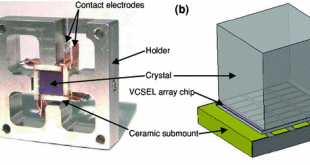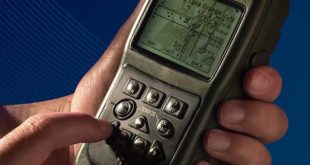The Department of Defense (DoD) is one of many government agencies that operates globally and is in constant contact with diverse cultures. Communicative understanding, not simply of local languages but also of social customs and cultural backgrounds, lies at the heart of Civil Affairs and Military Information Support Operations activities. …
Read More »Quantum cryptography (QC) or Quantum key distribution (QKD) are assumed hackproof but its implementations have vulnerabilities
Quantum computers could undermine almost all of the encryption protocols that we use today. Though quantum computers are still quite some way from being practical, usable machines, once they become so, we could be looking at a whole new world when it comes to online privacy — one in which …
Read More »AI enabled Intelligent Satellite Networks
Satellite communication can provide many benefits and complement terrestrial networks. They can provide service continuity, to provide network access over uncovered and under-covered areas. They can provide backup or service ubiquity, to ameliorate the network availability in cases of temporary outage or destruction of a ground network due to disasters. …
Read More »Dynamic metasurfaces including Liquid crystal metasurfaces allow tuning of metasurface functionality also after fabrication.
Metamaterials are artificially structured materials designed to control and manipulate physical phenomena such as light and other electromagnetic waves, sound waves and seismic waves in unconventional ways, resulting in exotic behavior that’s not found in nature. This class of micro- and nano-structured artificial media are predicted to be able to protect …
Read More »Electric Propulsion based on Iodine Fuel will enable Moon and other near Earth objects missions to deorbiting, rendezvous, and satellite maintenance mission
Propulsion systems can be classified based on their dependence on the onboard power: electric and non-electric systems. Electric propulsion systems are mainly classified into resistojet, electrospray, ion, Hall and pulsed plasma systems, and they actively require on-board power for their operation, while the non-electric propulsion systems can be classified into …
Read More »Vertical-cavity surface-emitting lasers (VCSEL& VECSEL) arrays enable data communication to lidar and military infrared imaging
The illumination source employs different technologies, ranging from lamps to semiconductor light emitting diodes (LEDs) or lasers. The lamp, while straight-forward, is broad-band, bulky, and generally inefficient. The main wavelengths of interest for illumination are around 808nm, 976m, 1064nm, and 1550nm. The 808nm region offers the best responsivity for …
Read More »Europe and US launch Quantum testbeds and Quantum loop to catchup China in Quantum Communications Race
The race to conquer the quantum domain is among the most fiercely competitive in today’s world of technology. One important quantum technology is Quantum key distribution (QKD), that establishes highly secure keys between distant parties by using single photons to transmit each bit of the key. Quantum cryptography is unbreakable …
Read More »DARPA SDCPS & JARVIS developing AI assisted design of Military Cyber Physical Systems
Cyber physical systems (CPS) are instrumental to current and future Department of Defense (DoD) mission needs – unmanned vehicles, weapon systems, and mission platforms are all examples of military-relevant CPS. These systems and platforms integrate cyber and physical subsystems, and the enormous complexity of the resulting CPS has made their …
Read More »DOD developing hardened Military GPS receivers or User Equipment (MGUE) to mitigate the threat of GPS Jamming and Navigation Warfare
Systems like GPS, Russia’s GLONASS, China’s BeiDou, and Europe’s Galileo systems are Global Satellite Navigation Systems (GNSS) that provides real-time positioning, navigation and timing (PNT) data. The worldwide Global Positioning System (GPS), created in the late 1980s, has evolved to become an essential part of life for nearly every person on …
Read More »DARPA SBIR for 3D printing of safe and edible food products converted from waste
With nutritional status being central to success in battle, food technology has long been considered an enabler for military operations. Food technology has been instrumental in ensuring that troops remain “fit to fight”. 3D printing technology for food continues to advance. The 3D printing technology will be fundamental to …
Read More » International Defense Security & Technology Your trusted Source for News, Research and Analysis
International Defense Security & Technology Your trusted Source for News, Research and Analysis






